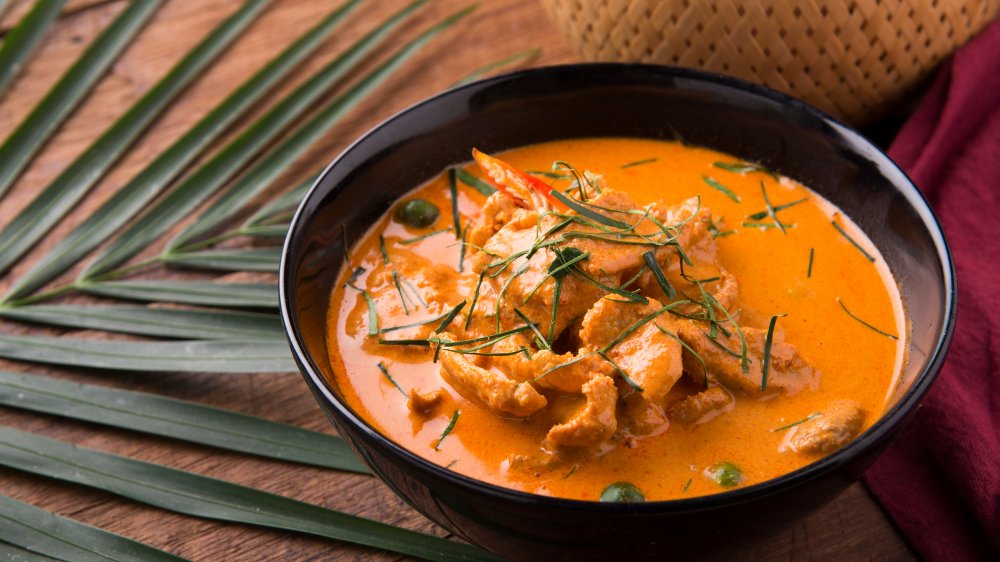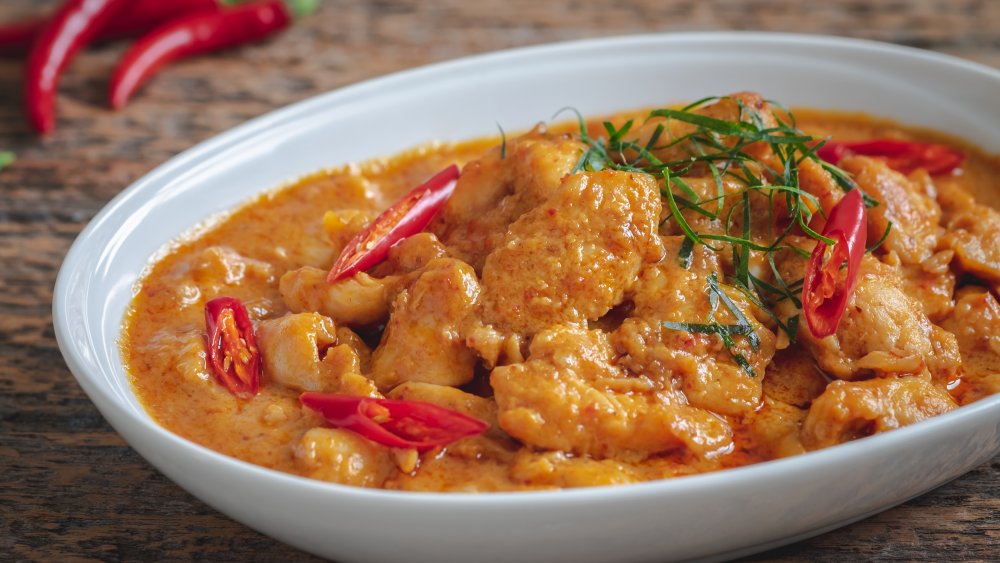The Subtle Difference Between Red Curry And Panang Curry
Lemongrass, ginger, chilis, kaffir lime — all of these ingredients immediately summon the intoxicating aromas and bold flavors of Thai cuisine. Curries are a cultural cornerstone that are integral to the history of Thai cuisine. If you've ever been unsure on the differentiation between certain types of curry, though, look no further — this is your official primer for all-things Thai curries.
At its simplest, Thai curries are often categorized by color: red, green, and yellow. Particular ingredients result in these distinctive colors, according to The Spruce Eats, with chili powder and red curry paste in red curry, turmeric in yellow curry, and a mix of cilantro, kaffir lime, and Thai basil in green curry (called kreung gaeng keo wahn in Thai). Another distinction between curries is the level of heat. Red curry is traditionally the hottest, whereas green is more mild, and yellow is the most mellow. Most curries also have the addition of coconut milk, which allows for a richer, creamier texture and flavor without the addition of dairy. All of the curries can contain any form of protein, including beef, chicken, pork, seafood, or tofu. However, there are other variations beyond just color, including Massaman curry, sour curry, and Panang (or penang) curry.
How to tell the difference between red and Panang curry
The tricky part of differentiating between red curry and Panang curry is that the curries can often be very similar in color. However, there are some key distinctions: Panang (or penang) curry is richer and sweeter than most red curries, due to coconut cream (in place of coconut milk) and sometimes even peanuts, according to ChowHound. In Thailand, it's traditionally served with beef, and is typically very spicy. Thrive Cuisine also notes that Panang curry has a slight textural difference from red curry, being "thicker and less soupy," and also tends to have crunch from the peanuts and additional veggies.
A word to the wise: if you're ordering a tofu curry and planning on enjoying a vegan meal, be sure to ask for no fish sauce or shrimp paste. Most Thai curries contain these ingredients in their base curry paste recipe. Lastly, most Thai restaurants will ask how spicy you'd like your meal, so if you're averse to spice, be sure to let them know and your dish can be made as mild as possible. However, it is customary for a Thai meal to be at least a little bit spicy!

